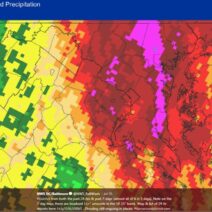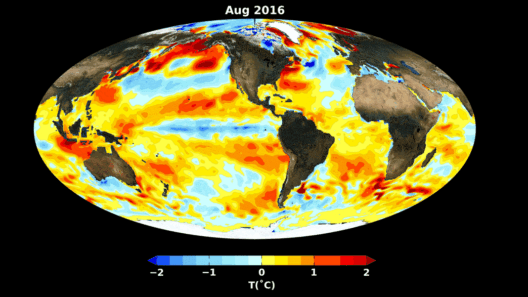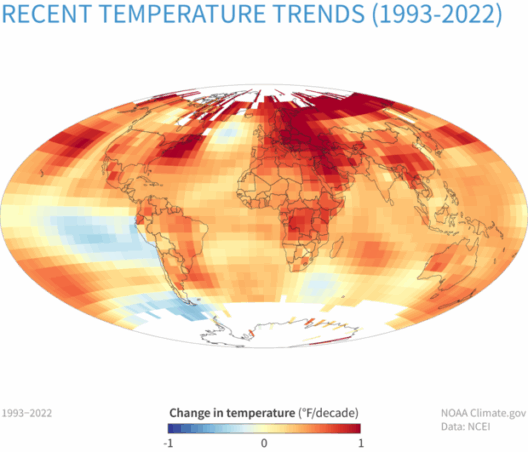Arizona, known for its sprawling deserts and magnificent landscapes, captivates many with its dramatic skies and intense sunlight. The state’s climate is primarily characterized by its arid and semi-arid conditions, culminating in one of the hottest climates in the United States. As one delves into the intricacies of Arizona’s weather patterns, the interplay of soaring temperatures, precipitation variability, and unique geographical features begins to unfold.
The most conspicuous aspect of Arizona’s climate is its relentless sunshine. With over 300 days of sun annually, the state boasts an average of approximately 5,500 hours of sunshine each year. This abundance not only fosters a thriving ecosystem but also attracts outdoor enthusiasts year-round. However, the sunny disposition belies the complexity of climatic influences that shape the daily weather. At the heart of this phenomenon is the state’s geographical diversity, which includes mountain ranges, high plateaus, and desert valleys, all contributing to a rich tapestry of microclimates.
The deserts, particularly the Sonoran Desert, encapsulate the quintessential Arizona experience. Here, summers are positively torrid, often recording temperatures exceeding 110°F (43°C). The extreme heat is frequently accompanied by low humidity levels, creating an almost oppressive atmosphere during peak daylight hours. In contrast, evenings can provide a striking reprieve, as temperatures plummet significantly, offering a stark juxtaposition to the daytime heat. This characteristic shift invites nocturnal activities and offers a chance for flora and fauna to thrive in cooler ambient conditions.
Conversely, the higher elevations, such as the Mogollon Rim and San Francisco Peaks, exhibit a much cooler climate, fostering a lush environment that starkly contrasts with the parched deserts. During summer, temperatures can fluctuate dramatically, often leading to sudden storms that ignite the skies in visual symphonies of lightning. These phenomena not only showcase nature’s thrilling caprice but also bring much-needed precipitation to the often moisture-deprived regions.
Rainfall in Arizona is notably inconsistent. The state experiences a bimodal precipitation pattern: a brief but intense monsoon season during late summer and sporadic winter storms. The monsoon season, typically spanning from June to September, can transform the desolate terrain into a vibrant oasis, albeit briefly. During this period, moisture-laden air from the Gulf of California collides with the intense heat of the desert, producing dramatic thunderstorms that can lead to flash flooding. These downpours, while transitory, are crucial for replenishing groundwater sources and sustaining the diverse vegetation that emerges post-storm.
Winter, on the other hand, presents a different narrative. Although Arizona is synonymous with warm afternoons even in winter, certain areas, particularly in the north, experience a true winter climate, complete with snowfall. The winter months can see substantial snowfall in the higher elevations, allowing for a unique recreational blend of skiing and snowboarding against an otherwise predominantly arid backdrop. This seasonal contrast encapsulates the multifaceted aspects of Arizona’s climate.
Drought is another critical component of Arizona’s environmental discourse. As temperatures continue to rise due to climate change, the state faces increasingly severe drought conditions. Water scarcity poses a pressing challenge for cities and ecosystems alike. Though Arizona has implemented various conservation measures, the overreliance on surface water from lakes and rivers continues to strain resources. Sustainable practices must be adopted to ensure that both the diverse biological tapestry and urban infrastructure can coexist harmoniously in an environment where water has become a precious commodity.
The allure of Arizona’s skies extends beyond mere aesthetics. The atmospheric conditions give rise to some of the most breathtaking sunrises and sunsets, characterized by vivid hues of orange, pink, and purple. This captivating spectacle is not merely an observation; it underscores a larger narrative about the earth’s climatic systems. The extinction of vibrant colors often triggers reflection on broader environmental issues, including the effects of pollution and climate deviations.
Moreover, the interplay between Arizona’s climate and its diverse ecosystems forms the backbone of a vast array of wildlife habitats. From resilient cacti in the Sonoran Desert to the ponderosa pines in the high country, each organism plays a pivotal role in the ecological balance. Understanding the climatic influences these species endure can provide insight into their adaptive strategies and vulnerabilities as climate patterns shift.
In conclusion, the climate of Arizona encapsulates a myriad of elements that extend beyond the simple characterization of scorching heat and minimal rainfall. The intricate layering of climatic patterns, geographical diversity, and ecological richness presents a compelling narrative of resilience in the face of environmental changes. The dazzling Arizona skies are a testament to nature’s complexities, reminding us not only of the beauty that exists but also of the pressing issues that threaten its stability. Thus, as we admire the iconic sunsets, we must remain cognizant of our responsibility to protect and preserve the delicate balance that sustains Arizona’s unique environment.








